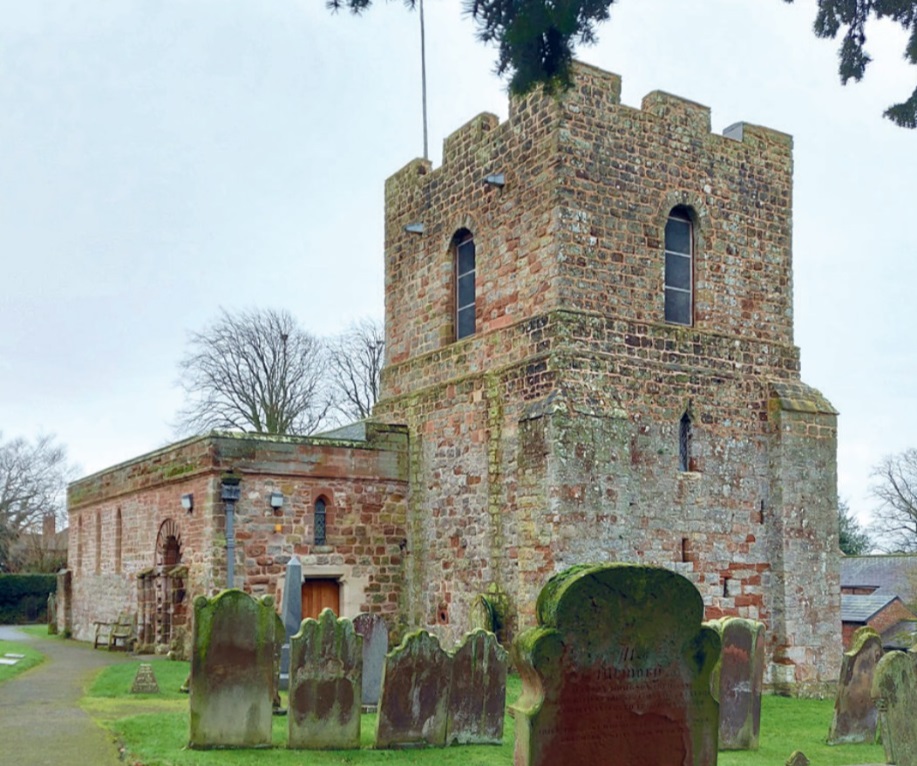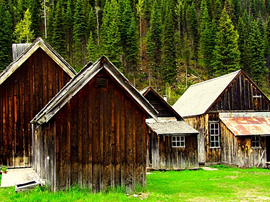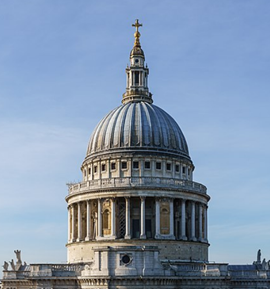What happened to Hadrian's Wall
Some of the fabric of Hadrian’s Wall can no longer be seen and some of what can be is reconstruction, but its former stones can be found in many buildings near its route.

|
| St Michaels, Burgh by Sands. The grey stones (probably spolia) were quarried some distance away, the local substrata being clay and red sandstone. (Photo: Alexandra Fairclough) |
Hadrian’s Wall may well be reduced to rubble in places, but the stones that the Romans quarried, transported and used to build it have not necessarily been lost. Some of the softer stone crumbled over the centuries but the harder stone was incorporated into the nearby structures that followed. Many of these structures survive today and elements of Roman material can still be seen. The world heritage site includes many of these buildings within the buffer zone and most, if not all, are statutory protected.
Together with the German Limes (Germanic frontier, inscription date 2005) and the Antonine Wall (inscription date 2008), Hadrian’s Wall (inscription date 1987) forms part of the Frontiers of the Roman Empire World Heritage Site.
Unesco describes it: ‘The Roman Limes represents the border line of the Roman Empire at its greatest extent in the 2nd century AD. It stretches over 5,000 kilometres from the Atlantic Coast of northern Britain through Europe to the Black Sea, and from there to the Red Sea and across North Africa to the Atlantic Coast. The remains of the Limes today consist of vestiges of built walls, ditches, forts, fortresses, watchtowers and civilian settlements. Certain elements of the wall have been excavated, some reconstructed and a few destroyed.’
In 76 AD, Publius Aelius Hadrianus (Hadrian) was born in a Roman town in Spain called Italica, near Seville. He was the son of Publius Aelius Hadrianus Afer, a senator of praetorian rank and his wife, Domitian Paulina, daughter of a distinguished Hispano-Roman senatorial family from Cadiz. He lost both of his parents by the age of 10 and was taken under the wing of his father’s first cousin, Trajan, emperor of Rome. Hadrian succeeded Trajan to become Roman emperor from 117 to 138. Hadrian visited Britain in 122 AD as the wall construction began, and stayed here until 127 AD.
Why the wall was built is unclear. It seems to have been intended to prevent raiding, and it could have been used as a taxation system, to control movement, and as a symbol of strength and power.
Where did the stones of the wall and forts disappear to over the last 1,900 years? While there is evidence that the wall and buildings were used and inhabited following the Roman occupation, they were eventually abandoned and fell into disrepair. Given that the wall comprised of prepared, cut stone, it became valuable as a building material for new structures in the nearby towns and villages. The stone was used to build churches, castles, field walls and farmhouses from the sixth century onwards. This plundered Roman material is known as spolia (Latin for spoils, or anything stripped from someone or something).
All along both sides of the wall buildings were constructed using stone from the wall and its associated buildings. The development of Christian worship led to the building of churches and monasteries, abbeys and priories. Some have inscription stones set into their walls, or Roman artefacts such as tombstones or altars. Spolia can be seen in the Anglo-Saxon religious houses in the northeast at Tynemouth, Jarrow and Hexham, and later in 12th-century monastic buildings such as Carlisle Cathedral and Lanercost Priory.
Evidence is seen in later Cumbrian churches such as St Mary’s, Beaumont, which sits close to the former Roman Turret 70a. Another nearby church, St Michael’s, Burgh by Sands, is located within the former Roman fort of Aballava. The walls of the early church were built of stone from the wall and the nearby vicus (a vicus being a small settlement located outside a Roman military fort, inhabited by the local population to support and trade with the Romans).
The present aisle dates from the 13th century, but Roman stone was used to build the tower in the 14th century, and a carved Celtic head is evident within the interior stonework of the tower. This was probably scavenged from the former vici. It was common to incorporate Roman decorative elements, not because they were considered aesthetically valuable by scavenging builders, but because they were adequate as a building material. Over the centuries much of the decorative Roman masonry has been stolen, especially if the stone had inscriptions or carvings. Other artefacts and elements such as altar stones have been found within the walls of buildings and boundaries, and buried in the landscape (such as in the garden of St Michael’s vicarage).
Spolia were used in the construction of the domestic buildings of the wealthy, including Thirlwall Castle and Carlisle Castle. Smaller halls, farmsteads and shielings were also constructed along the wall using plundered materials. Examples include a pele tower known as Drumburgh Castle, and Housesteads Farm.
Research is underway to learn more about the construction of Hadrian’s Wall, following the discovery of a fragment of manuscript allegedly written by a legionary stonemason. This indicated that four billion Roman pounds of stone were needed to build the longest Roman artefact in the world. We may never know the number of post-Roman buildings (nor the geographical extent) that were built using plundered stone from Hadrian’s amazing boundary.
This article originally appeared as ‘What happened to Hadrian’s Wall?’ in the Institute of Historic Building Conservation’s (IHBC’s) Context 179, published in March 2024. It was written by Alexandra Fairclough, a conservation officer in Cheshire, who lectures on architectural history, building conservation and heritage law.
--Institute of Historic Building Conservation
Related articles on Designing Buildings
IHBC NewsBlog
IHBC Context 183 Wellbeing and Heritage published
The issue explores issues at the intersection of heritage and wellbeing.
SAVE celebrates 50 years of campaigning 1975-2025
SAVE Britain’s Heritage has announced events across the country to celebrate bringing new life to remarkable buildings.
IHBC Annual School 2025 - Shrewsbury 12-14 June
Themed Heritage in Context – Value: Plan: Change, join in-person or online.
200th Anniversary Celebration of the Modern Railway Planned
The Stockton & Darlington Railway opened on September 27, 1825.
Competence Framework Launched for Sustainability in the Built Environment
The Construction Industry Council (CIC) and the Edge have jointly published the framework.
Historic England Launches Wellbeing Strategy for Heritage
Whether through visiting, volunteering, learning or creative practice, engaging with heritage can strengthen confidence, resilience, hope and social connections.
National Trust for Canada’s Review of 2024
Great Saves & Worst Losses Highlighted
IHBC's SelfStarter Website Undergoes Refresh
New updates and resources for emerging conservation professionals.
‘Behind the Scenes’ podcast on St. Pauls Cathedral Published
Experience the inside track on one of the world’s best known places of worship and visitor attractions.
National Audit Office (NAO) says Government building maintenance backlog is at least £49 billion
The public spending watchdog will need to consider the best way to manage its assets to bring property condition to a satisfactory level.
















